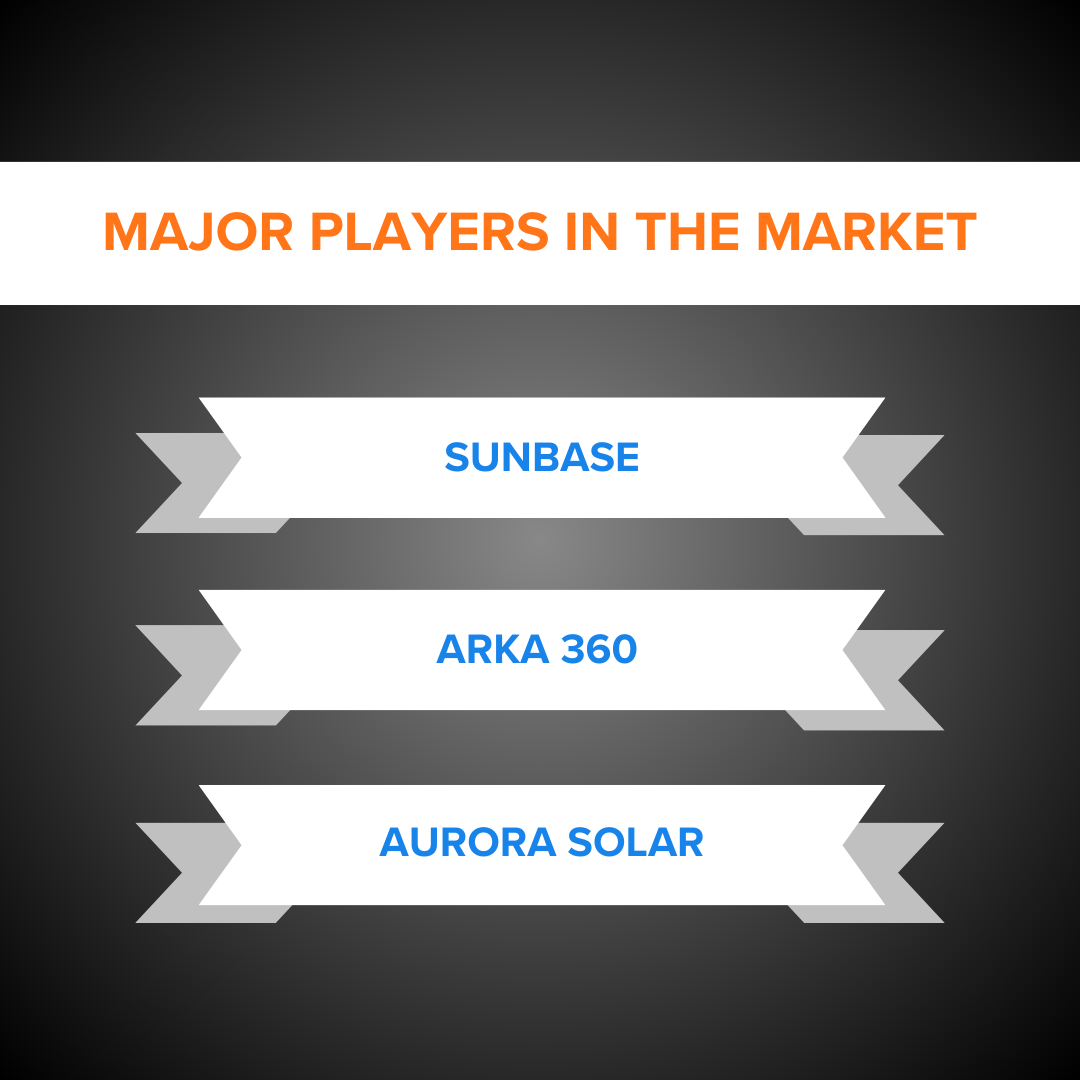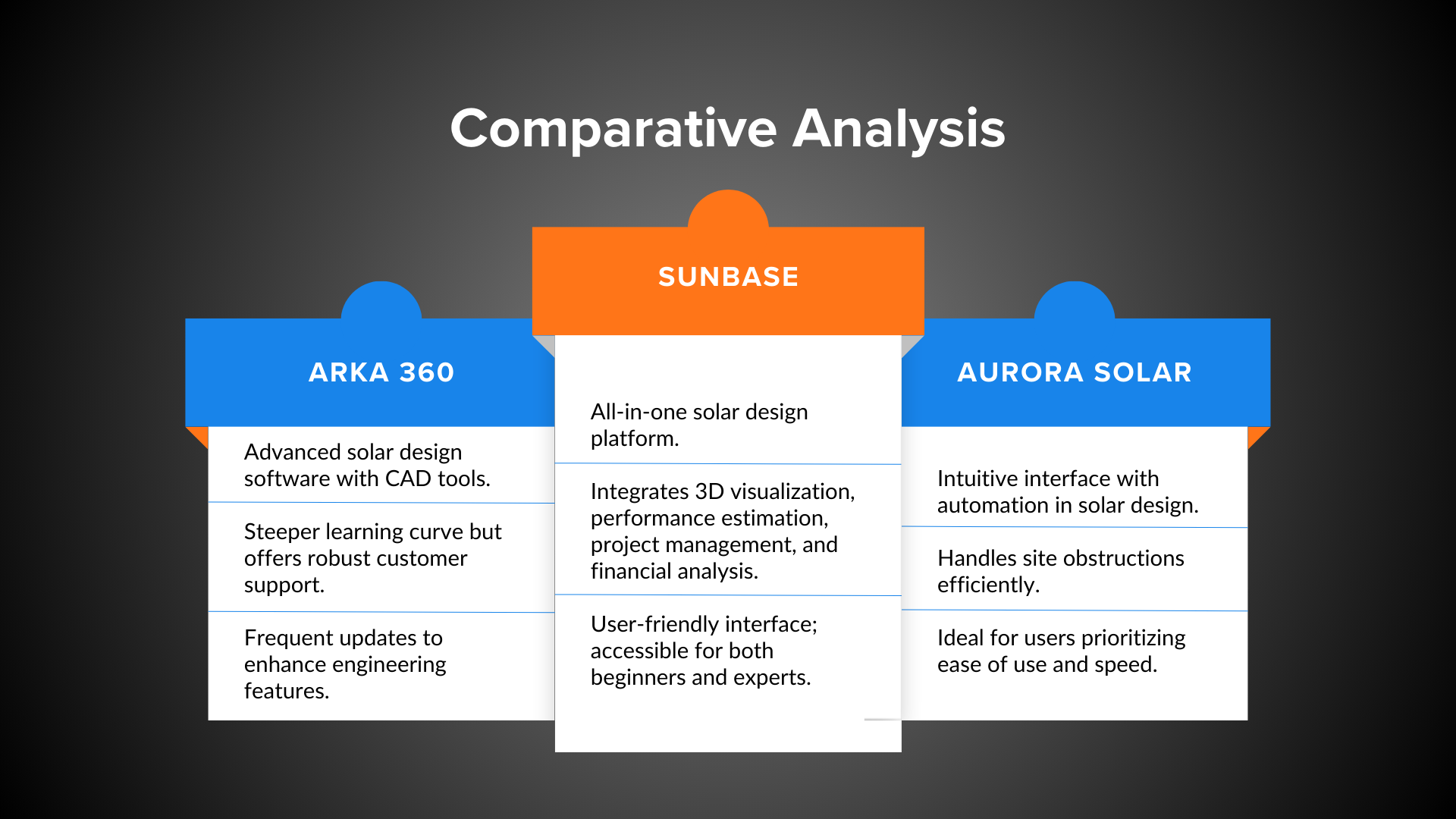August 28, 2024
The solar design software market is expanding rapidly, driven by the increasing demand for renewable energy solutions. This article compares various leading solar design software options focusing on their features, functionalities, and overall value for solar professionals, catering to both residential and commercial solar projects.
It will provide insights into the strengths and weaknesses of leading software options, helping users make informed decisions tailored to their specific needs in the solar energy sector.
Overview of Solar Design Software
Solar design software enables users to create detailed models of solar installations, perform energy yield calculations, simulate shading impacts, and optimize system layouts for maximum efficiency.
They serve as critical instruments for engineers, designers, and project managers aiming to deliver accurate, reliable, cost-effective solar energy projects.
Purpose
The primary purpose of solar design software is to streamline the complex process of designing solar PV systems. They help professionals create tailored proposals and provide essential support to customers by assessing the feasibility of solar projects, estimating potential energy production, and optimizing system configurations to meet specific energy goals and budget constraints.
Major Players in the Market

The solar design software market is populated with tools that cater to different aspects of the solar project lifecycle, from initial design and layout planning to financial analysis and project management.
We’ll take a closer look at three prominent software platforms—Sunbase, ARKA 360, and Aurora Solar. These software options facilitate a streamlined workflow by seamlessly integrating various design tools and platforms, simplifying the design process and accelerating project delivery for any company or business.
Sunbase
Sunbase is widely recognized as a leading solar software providing an all-in-one solar design solution that integrates design, customer relationship management (CRM), project management, and financial tools into a single platform.
It is designed to streamline the entire solar project process, making it easier for teams to collaborate and manage projects from inception to completion.
User-Friendly Interface:
The software is designed with usability in mind, offering an intuitive interface that caters to users with varying levels of technical expertise. This makes Sunbase accessible to both seasoned professionals and those new to solar design, reducing the learning curve and allowing teams to focus on project execution.
Proposal Enhancement:
Sunbase allows users to save solar module designs and images, which can be easily integrated into client proposals.
This feature enhances client engagement and improves sales conversion rates by providing clear, visually appealing presentations that showcase the potential of proposed solar installations.
ARKA 360
ARKA 360 is a powerful solar design software known for its advanced CAD tools and integrated engineering capabilities, which are essential for optimizing the placement of solar panels. It also features a robust CRM system designed to help solar companies manage their sales and lead generation processes effectively.
Advanced CAD Tools:
ARKA 360 offers state-of-the-art CAD tools that provide high levels of precision in solar system design. Its integrated engineering capabilities allow for detailed system analysis and optimization, making it a preferred choice for professionals who require advanced technical features.
Steeper Learning Curve:
Due to its advanced features and technical depth, ARKA 360 can present a steeper learning curve for new users. It may require more time and training to master compared to more user-friendly platforms like Sunbase.
Aurora Solar
Aurora Solar has a user-friendly interface and a strong emphasis on automation in the solar design process. It assists solar installers with design and optimization tasks.
Easy to use Interface:
Aurora Solar is designed with a focus on ease of use, making it accessible to users at all levels of expertise. Its intuitive interface reduces the complexity of the design process, allowing users to quickly and efficiently create accurate solar layouts.
Limited CRM Capabilities:
Unlike Sunbase, Aurora Solar offers more limited CRM functionality. While it excels in design and automation, it may not be the best choice for companies looking for an integrated solution that includes robust customer management tools.
Comparative Analysis

In comparing these top solar design software options, it is important to evaluate them based on design capabilities, user experience, and customer support. Each platform has its strengths and weaknesses, and the right choice depends on the specific needs of the user or organization.
Sunbase:
Sunbase is a versatile all-in-one solar design platform that integrates 3D visualization, performance estimation, project management, and financial analysis. Its user-friendly interface simplifies the design process, making it accessible to both novice and experienced professionals.
ARKA 360:
ARKA 360 is a powerful solar design software known for its advanced CAD tools. While it has a steeper learning curve it provides robust customer support and frequent updates to enhance its engineering functionalities.
Aurora Solar:
Aurora Solar is highly regarded for its intuitive interface and automation in solar design, particularly in handling site obstructions. It is ideal for those who prioritize ease of use and efficiency, making it perfect for fast-paced environments.
Conclusion

Selecting the right solar design software is crucial for the efficiency and success of solar projects. Sunbase is a versatile and user-friendly option that seamlessly integrates various functionalities, making it suitable for businesses of all sizes.
Reach out to Sunbase
Optimize efficiency, slash costs, and deliver solar projects faster with Sunbase Solar Design Software & Solar Proposal Software.
Are you ready to take your solar installation to the next level? Contact us and let's talk.
Frequently Asked Questions
Q1. What is the best solar design software for residential projects?
Ans - Sunbase is often recommended for residential projects due to its user-friendly interface and all-in-one solution that integrates design, project management, and financial analysis, making it easy to handle smaller-scale installations.
Q2. What are the system requirements for running these solar design software platforms?
Ans- Most solar design software platforms, including Sunbase, ARKA 360, and Aurora Solar, are cloud-based, meaning they require a stable internet connection and a modern web browser and are based on subscription fees.
I agree to receive marketing messaging from Sunbase at the phone number provided above. I understand data rates will apply, and can reply STOP to OPT OUT.







